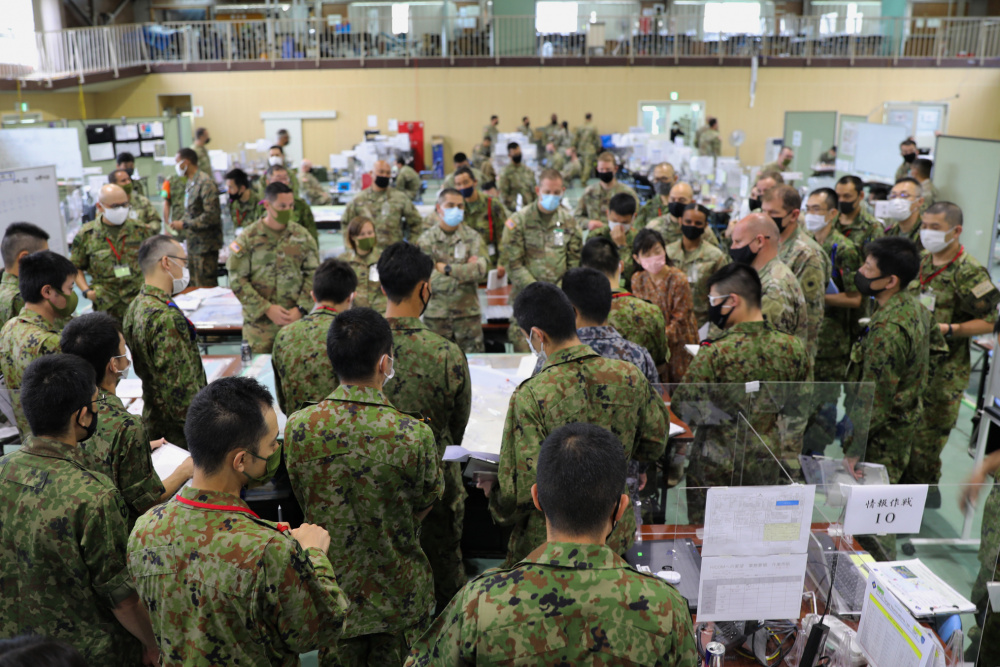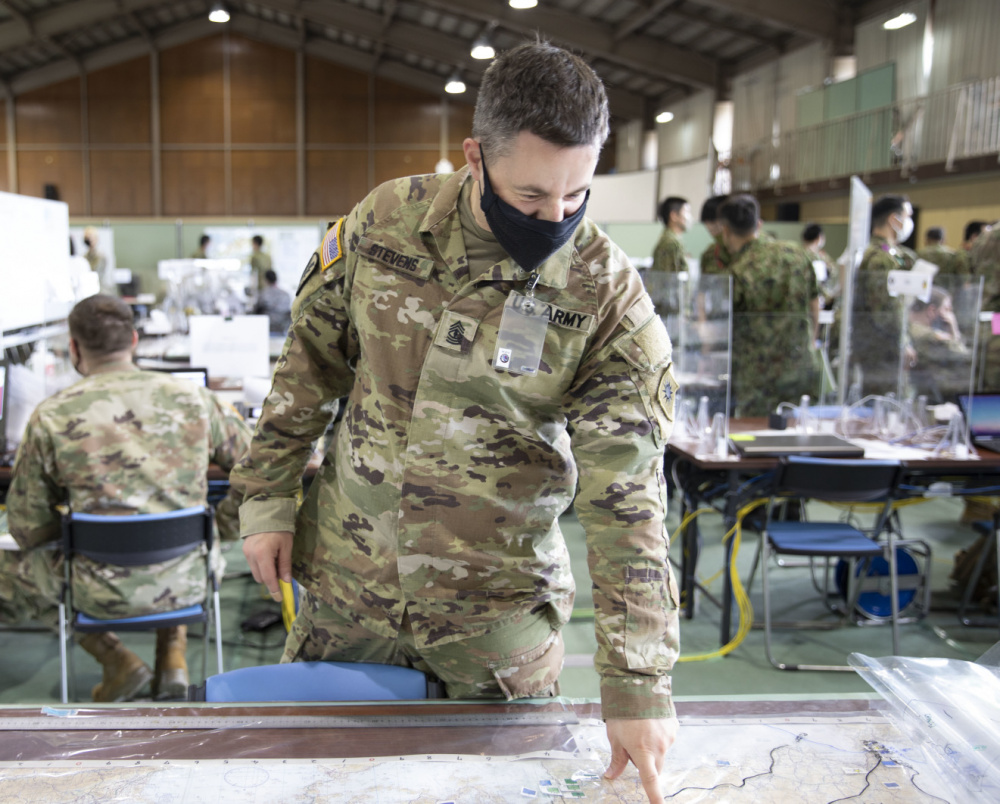

During OS 21-2 from June 24 through July 6, 2021 at Camp Itami, Japan, the 40th Infantry Division from Los Alamitos, California, Japan Ground Self-Defense Force and several U.S. Army units simulated Multi-Domain Operations.
“MDO concepts are emerging and being defined as we speak,” said U.S. Army Col. Dennis Keener, OS 21-2 chief of staff. “The JGSDF Middle Army and 40th ID are refining the employment of a multi-domain task force by practicing effects-based operations.”
The concept of MDO first appeared in a 2018 U.S. Army publication in alignment with that year’s National Defense Strategy. It proposed a shift from fighting violent extremists to focusing on authoritarian governments which increasingly pose a threat to national and global security.
The military strategy outlined how joint branch and multi-national participation across all domains will engage in armed conflict over the next decade. Military domains of warfare include air, land, maritime, space and cyberspace. Since force effectiveness is dependent not only on the cohesion of multiple domains but international partnership, the 40th ID gains invaluable experience by taking part in OS 21-2.
“The United States and Japan continue to share common goals in the Indo-Pacific region such as ensuring freedom of navigation and deterring aggression from nations such as China, Russia and North Korea,” said U.S. Army Maj. Gen. Laura Yeager, 40th ID commander.
The process of coordinating battle elements into a joint campaign is a challenging undertaking that tests each military’s potency and rapid employment of their capabilities and systems.
“I believe it is important for the 40th ID to become skilled in MDO so we can be more successful in future missions as the battle space changes,” said U.S. Army 1st Sgt. Craig Stevens, fires non-commissioned officer-in-charge. “Sharing knowledge with our Japanese counterparts helps Soldiers become better by making them think how best to explain the process of what they are doing. I have learned that the JGSDF has automated certain procedures that allow fire missions to be called at a much faster rate than when traditionally executed.”
Collaboration between allied forces allows for a faceted approach to combat, lending credibility to the future of MDO and continued bilateral training with partner nations.
“Organizations have a tendency to first reach internally for solutions, which is counter to MDO,” said Yeager. “The 40th ID is accustomed to working with both military and civilian partners and, as a result, we are collaborative and inclined to explore all options.”












